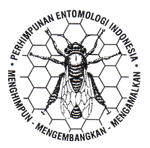Peluang investasi dan strategi pengembangan usaha budidaya kutu lak (Laccifer lacca Kerr): studi kasus di KPH probolinggo, perum perhutani unit II jawa timur
DOI:
https://doi.org/10.5994/jei.4.1.42Keywords:
Laccifer lacca, Schleichera oleosa Merr, investment opportunity, small businessAbstract
Shellac flea Laccifer lacca Kerr is a phytophagous insect, which lives on kesambi tree (Schleichera oleosa Merr). During its life cycle, shellac flea secretes liquid known as LAK and has many uses, such as varnish/polish, food cover, drug capsule, cassette ribbon, etc. In 2005, Perum Perhutani produced 60,547 kg LAK pellets, but has not fulfilled market demand. Cultivation technique is still conducted in a very simple way. Investment in developing shellac flea is also profitable, and promising. There are two choices of management schemes in it cultivate, the first is by infecting shellac flea to the host tree when the tree is 15 years old and the second is by infecting shellac flea when the tree is 4 years old. Financially, the latter approach is more beneficial than the former one. The value of NPV + 22 321 052 395, IRR 16.9%, BCR 1.55 and Net B/C 3.71 with discounted payback period for 10 year 8 months. SWOT analyzing was used in the design strategy as a management approach.Downloads
Download data is not yet available.
Downloads
Published
2017-02-23
How to Cite
Taskirawati, I., Suratmo, F. G., Darusman, D., & Haneda, N. F. (2017). Peluang investasi dan strategi pengembangan usaha budidaya kutu lak (Laccifer lacca Kerr): studi kasus di KPH probolinggo, perum perhutani unit II jawa timur. Jurnal Entomologi Indonesia, 4(1), 42. https://doi.org/10.5994/jei.4.1.42
Issue
Section
Articles
License
Authors who publish with this journal agree to the following terms:
- Authors retain copyright and grant the journal right of first publication with the work simultaneously licensed under a Creative Commons Attribution 4.0 International License that allows others to share the work with an acknowledgement of the work's authorship and initial publication in this journal.
- Authors are able to enter into separate, additional contractual arrangements for the non-exclusive distribution of the journal's published version of the work (e.g., post it to an institutional repository or publish it in a book), with an acknowledgement of its initial publication in this journal.
- Authors are permitted and encouraged to post their work online (e.g., in institutional repositories or on their website) prior to and during the submission process, as it can lead to productive exchanges, as well as earlier and greater citation of published work (See The Effect of Open Access).








